The diversity and intricacy of shapes and sizes of seeds is extraordinary. Even more amazing is that within even the tiniest of seeds lies the complete genetic information required to birth and structure such organisms as the complex passion flower, or a 360 foot tall sequoia. Seeds are also amazing travelers, either with the help of the wind or by hitching rides with neighboring wildlife. If stored in ideal conditions, seeds can also spring to life, after hundreds of years of lying dormant.
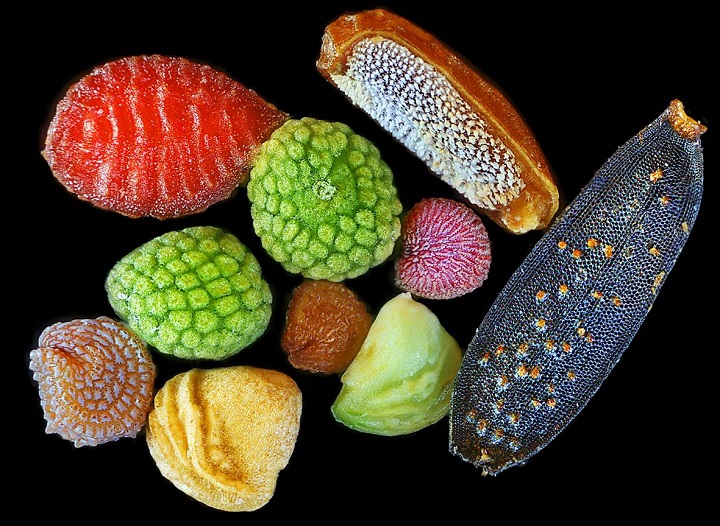
More often than not, the smaller the seed, the more texture found on its surface. Image by Rob Kesseler, robkesseler.co.uk
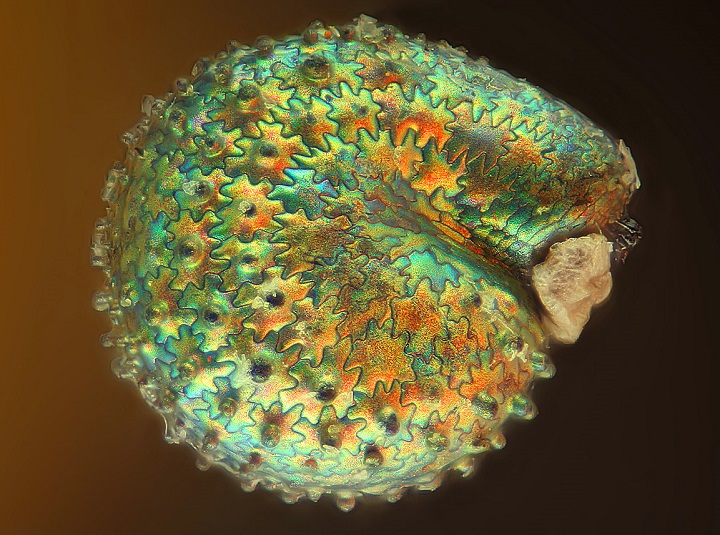
Portulaca seed (moss rose) as seen with a stereomicroscope, by Ms. Yanping Wang from the Beijing Planetarium in Beijing, China. olympusbioscapes.com Originally found at olympusbioscapes.com/gallery/2011/index.html

Plant seed from freshwater pond, starting to sprout. Fluorescence, 10x by Dr. Daniel Stoupin, Moscow, Russia. olympusbioscapes.com Originally found at olympusbioscapes.com/gallery/2011/index.html
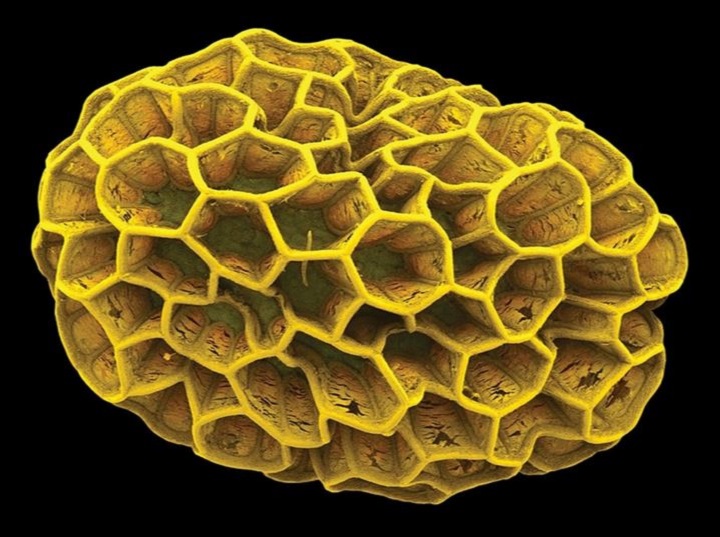
Loasa Chilensis (a creeping flowering vine, native to Chile). Many wind-dispersed seeds have a honeycomb pattern, which are referred to as balloon seeds, this Chilean native has an extreme honeycomb. To create a scanning electron micrograph, a seed is coated with a microfine layer of gold or platinum and put into a vacuum chamber, where it is bombarded with electron particles. The electron beam measures the seed’s surfaces and translates these measurements into a digital image. Image by Rob Kesseler, robkesseler.co.uk.
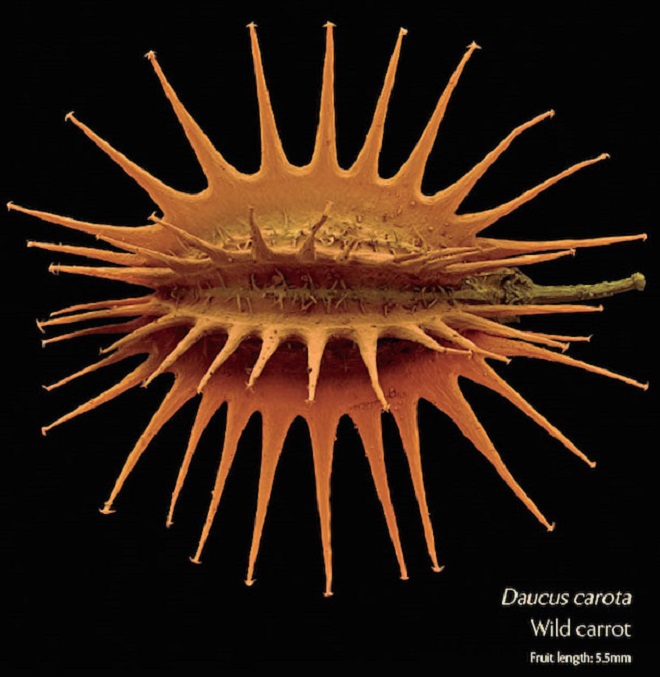
Wild carrot seed.
robkesseler.co.uk
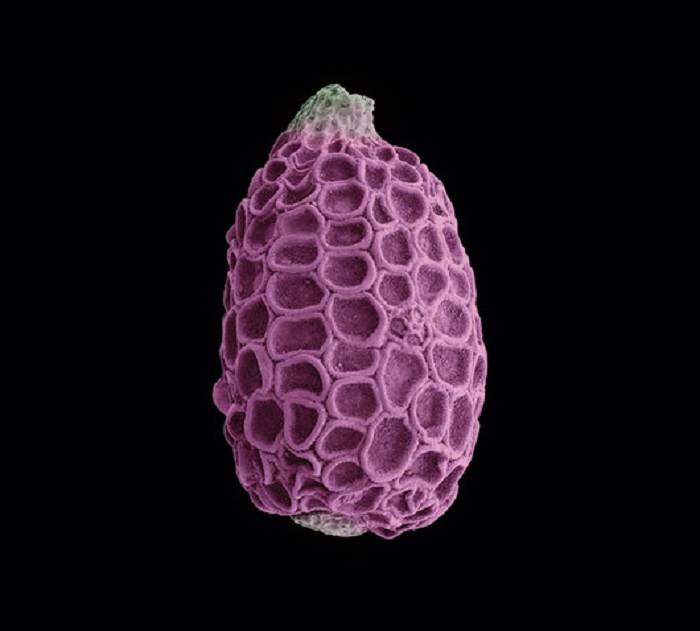
A sundrew seed from South Africa. Rob colors the images in Photoshop based on the colors of the original plant. Image by Rob Kesseler, robkesseler.co.uk.
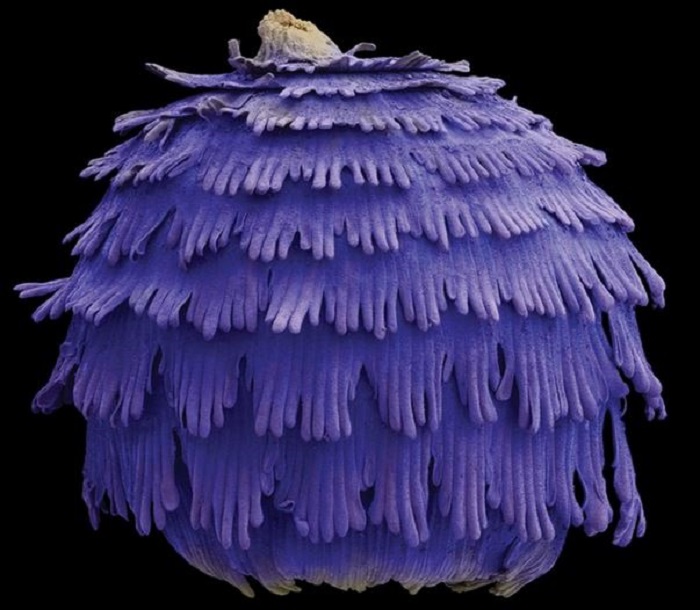
Delphinium pergrinum, Larkspar family. Texture helps the seed to both hug into its host surface and for mobility purposes. By Rob Kesseler: robkesseler.co.uk.

African Cabbage seed, a wildflower indigenous to Africa, but now considered a weed in many tropical locations around the world. Photo by Rob Kesseler. robkesseler.co.uk.
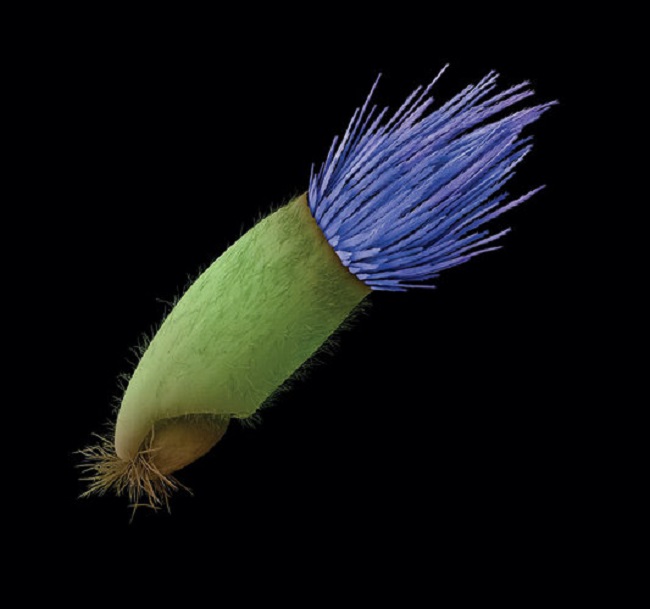
Seed from a thistle of the Centaurea genus. Photo by Rob Kesseler. robkesseler.co.uk.
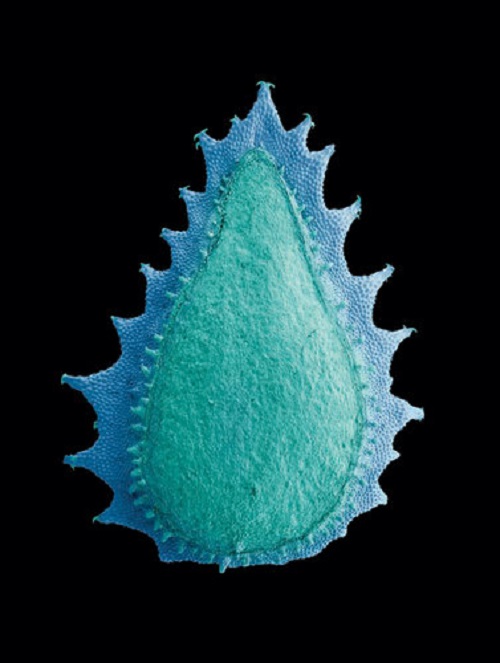
A forget-me-not cousin, from the Trichodesma genus. Photo by Rob Kesseler. robkesseler.co.uk.
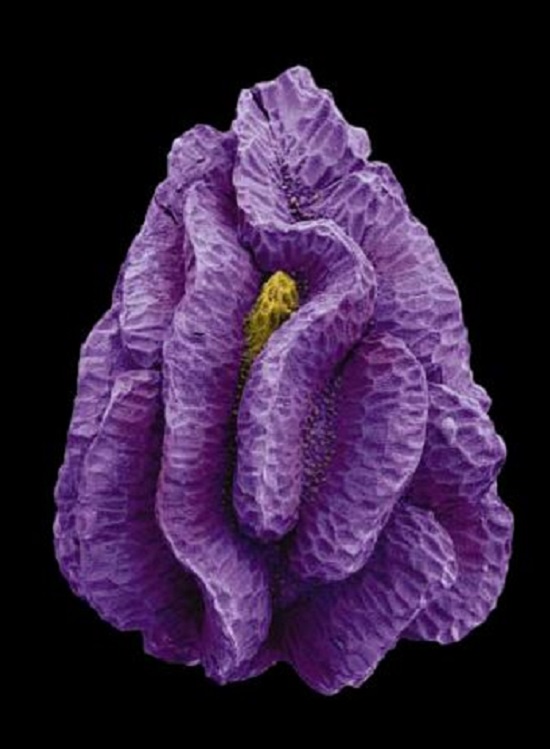
Ivy leafed toadflax seed. Image by Rob Kesseler, robkesseler.co.uk.
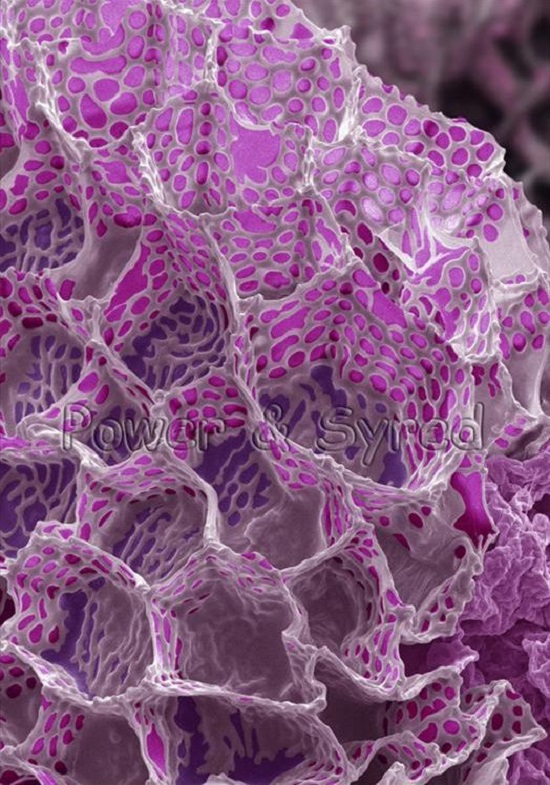
Foxglove seed magnified.
Coloured scanning electron micrograph (SEM) of the highly sculpted coat of a foxglove seed (Digitalis purpurea). This balloon seed is wind dispersed. psmicrographs.co.uk
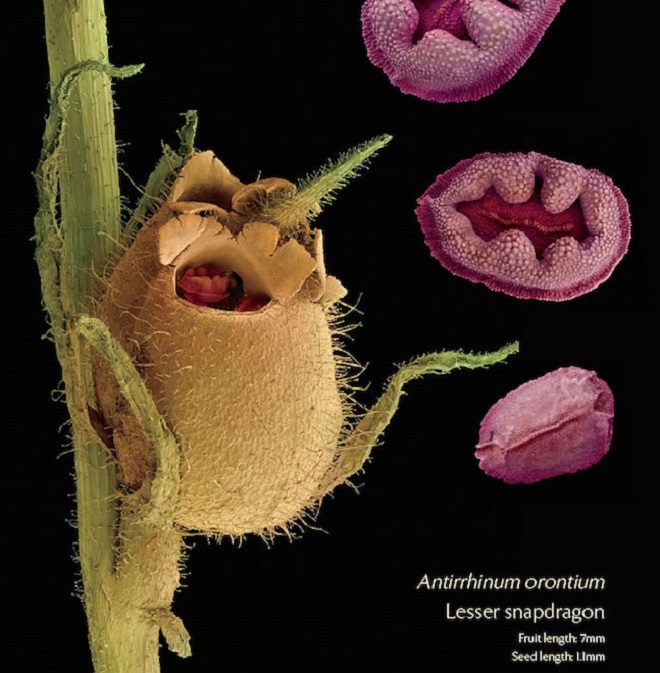
Snapdragon Seed
robkesseler.co.uk
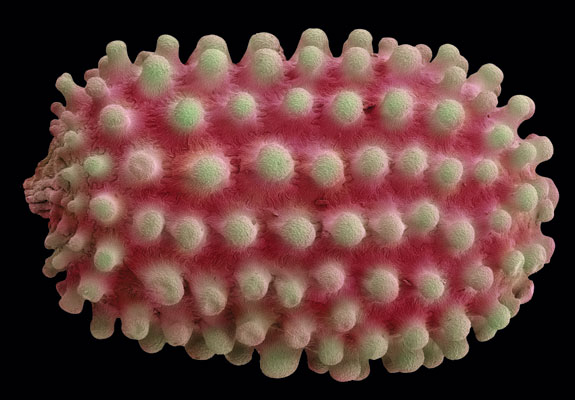
Crassula pellucida, a succulent, in the jade family. Image by Rob Kesseler, robkesseler.co.uk.
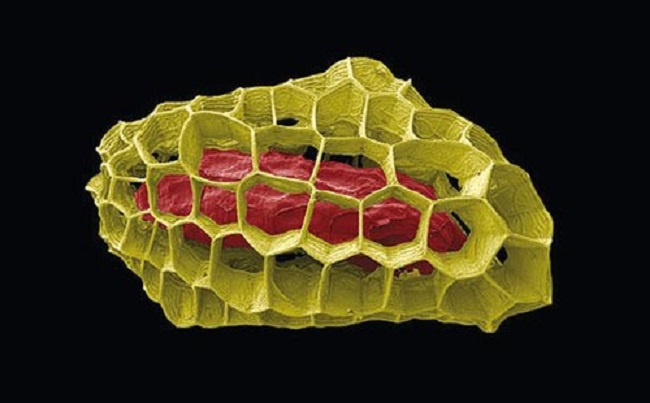
Lamourouxia viscosa (a Mexican wildflower). Scanning electron microscopes, scan specimens with a beam of electrons and produces a series of precisely detailed files, which are then compiled into a single image. Image by Rob Kesseler, robkesseler.co.uk.
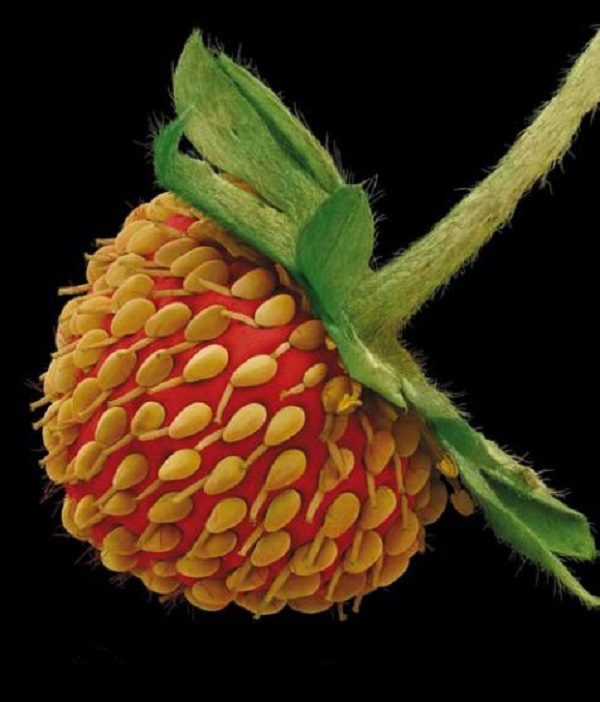
Garden Strawberry (Fragaria x ananassa) covered in seeds (actually ‘achenes’). Image by Rob Kesseler, robkesseler.co.uk.
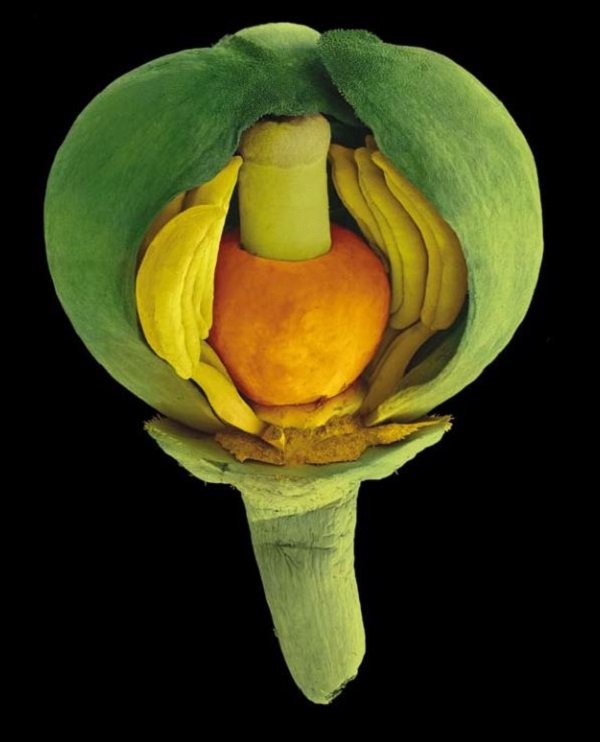
Kaffir lime (Citrus hystrix) longitudinal section through flower bud. By Rob Kesseler: robkesseler.co.uk

Arabidopsis Thaliana (a European cress). The image shows a small, six-day-old seedling of Arabidopsis thaliana under a scanning electron microscope and captures the essence of seed germination, the tiny and delicate beginnings of a plant. Love the textures. Image by: Mark Talbot. maxisciences.com

Detail of a pod of the flowering legume “Prickly Caterpillar”
by Viktor Sýkora. olympusbioscapes.com Originally found at olympusbioscapes.com/gallery/2011/index.html
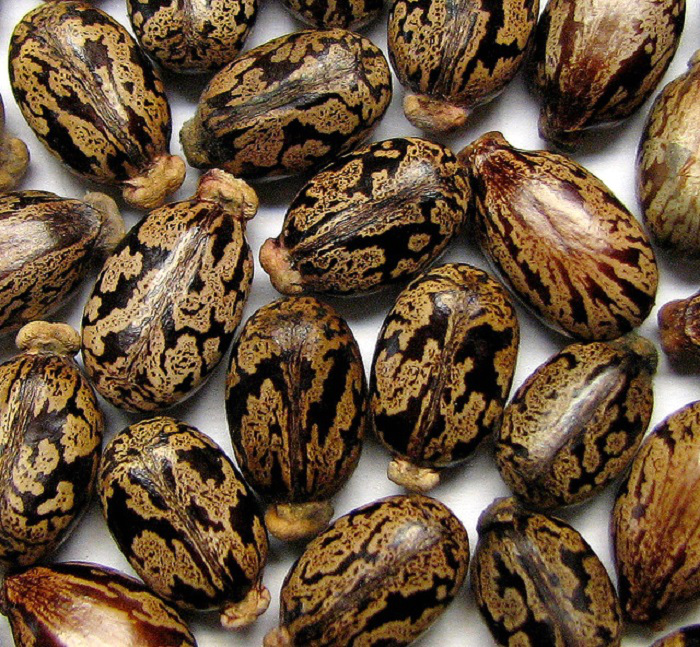
Castor Bean Seeds are poisonous to people, animals, and insects. Each seed is unique in design. Image by Mark Birkle, flickr.com
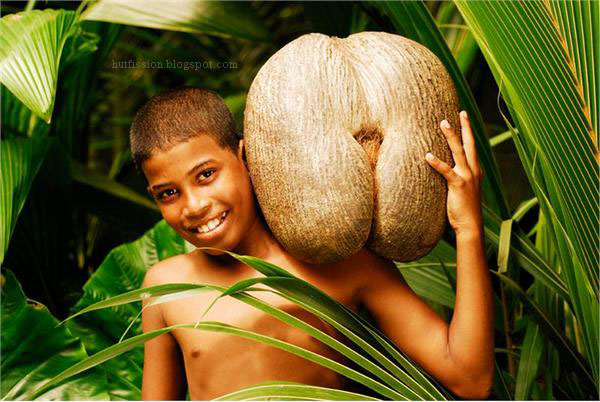
The largest known seed in the world belongs to the Coco de Mer palm (Lodoicea maldivica). The seed is found within an even heavier/larger nut. The seed itself can weigh up to 40 pounds, the largest fruit/nut weighed over 80 pounds. hutpedia.blogspot.com
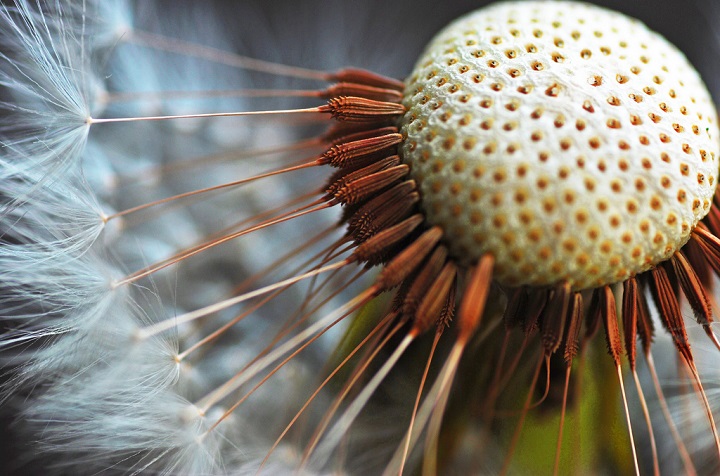
Dandelion seeds have an efficient means of locomotion.
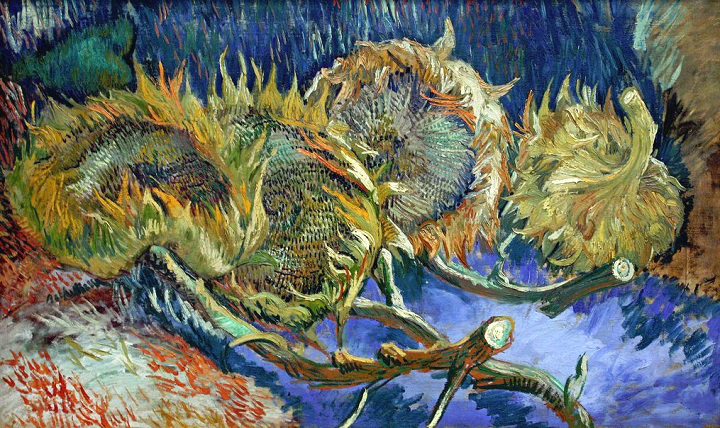
Four Sunflowers Gone to Seed, 1887,
by Vincent Van Gogh.
Kröller-Müller Museum, Otterlo, Netherlands.
More Info About Seeds
- The Millennium Seed Bank Partnership is the largest ex situ plant conservation project in the world. Their focus is on global plant life faced with the threat of extinction and plants of most use for the future. www.kew.org
- Video about the Millennium Seed Bank: youtube.com
- A website devoted entirely to seeds: theseedsite.co.uk
The Best Photography Book About Seeds
Seeds: Time Capsules of Life by Wolfgang Stuppy, Images by Rob Kesseler. (Preface by Prince Charles!)
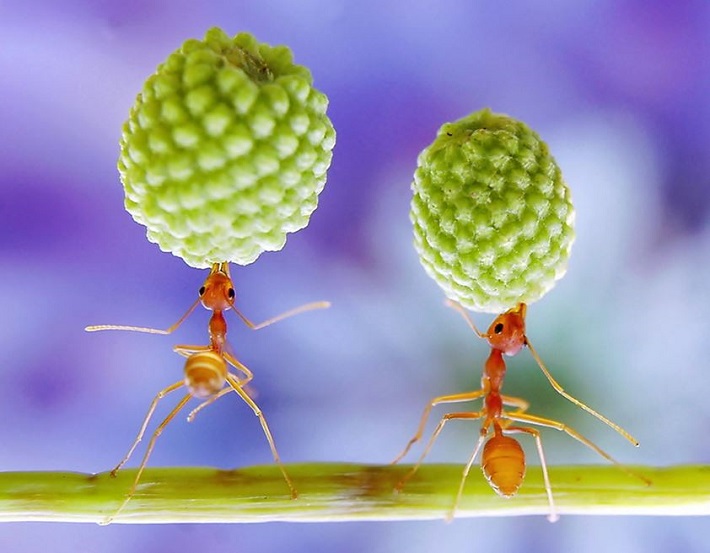
Red ants balancing mimosa tree seeds.
Copyright: Eko Adiyanto, 500px.com/EkoAdiyanto

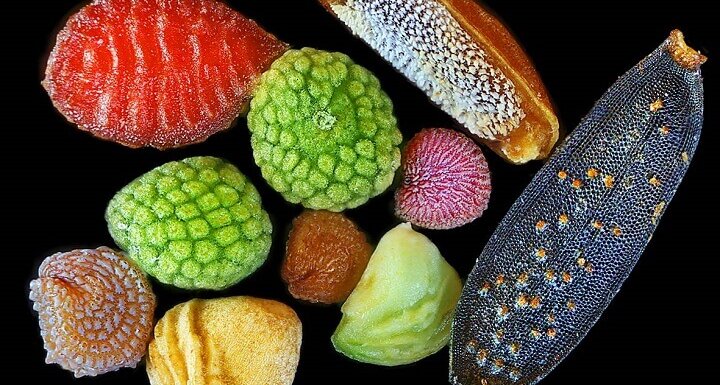
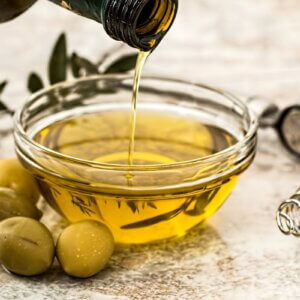
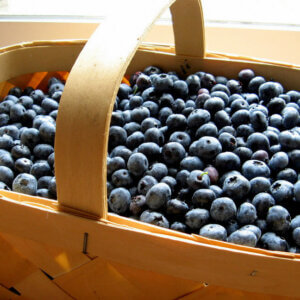
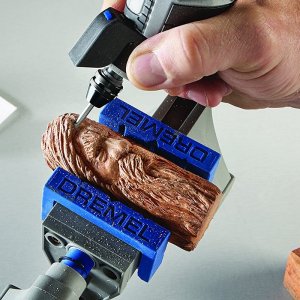

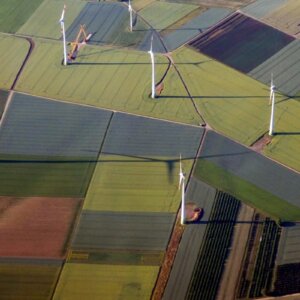
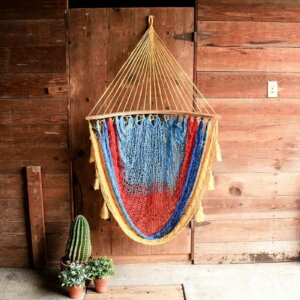
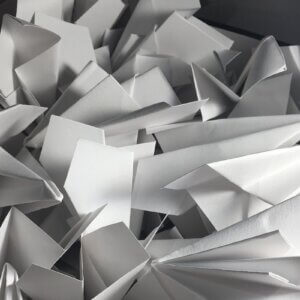

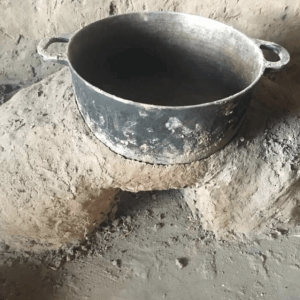
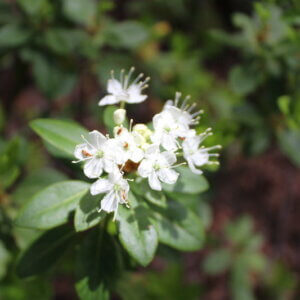
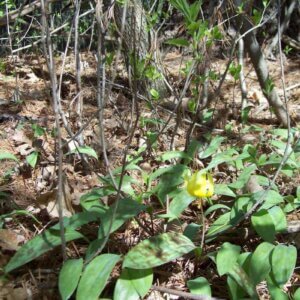
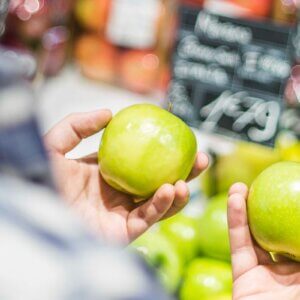
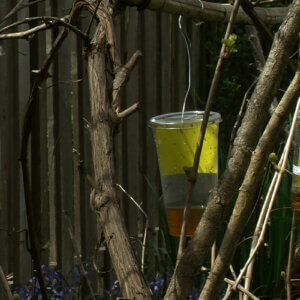


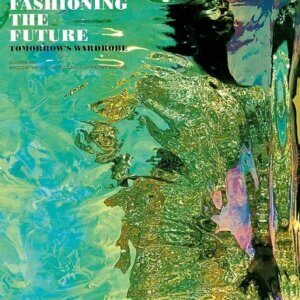

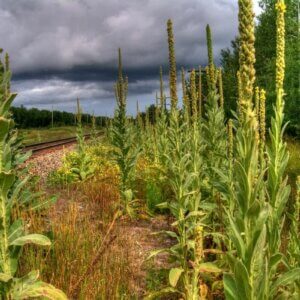

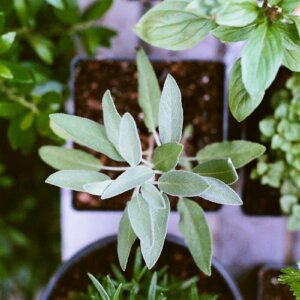

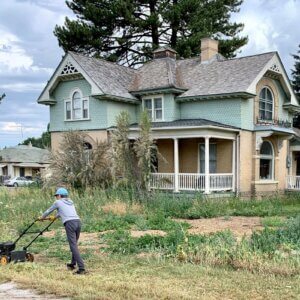
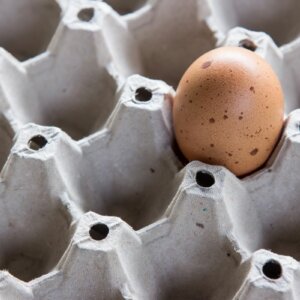



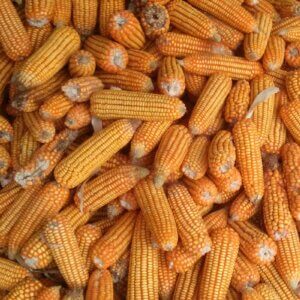



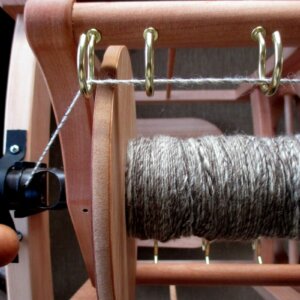
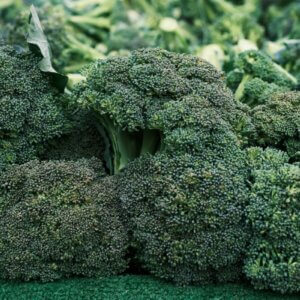
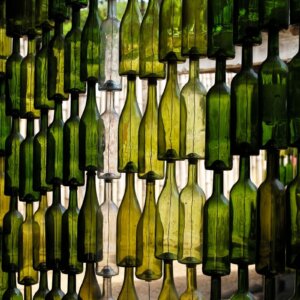




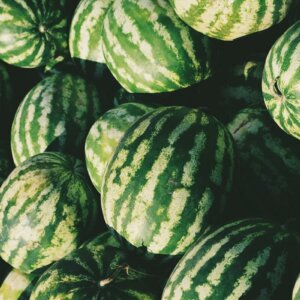
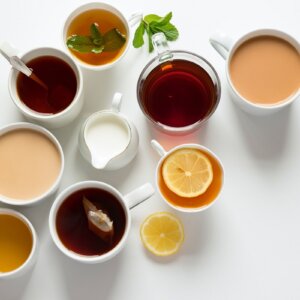

That is so cool! Look how different each of them are! The giant seed’s fruit weighs as much as I do!!! God’s glory is amazing!
So a god makes his mark of glory, in a tiny seed… whilst thousands of children starve each day, so man has the money to buy weapons and continue un-holy wars??
You really need to read more than one book.
No religion, no holy war.
Ed Hart
Thank-you for sharing your photographs of our great and mighty designer–GOD.
Just GREAT ! Keep going on.
God can do any thing
Beautiful images of nature’s artistry.
How can I order prints?
Please contact Rob Kesseler!
info@robkesseler.co.uk
All seed images of Rob Kesseler’s in his book: Seeds: Time Capsules of Life (Insight Editions, 2012) text by Wolfgang Stuppy, Images by Rob Kesseler.
Fascinating.
Looking at these microscopic structures reminds me of lunar landing craft images or better.
HI, I am working on a little seed book for kids 6-9. What is the procedure for sharing these pix with the kids? I have the seed and fruit books by Rob, but might there be a way to add a few of these pix in the book? Or is it an impossible dream… They sure are amazing. Thanks for sharing. Just beautiful.
Dear Val, Yes, you need express rights from Rob Kesseler to reprint his images in a book that will be resold or distributed!
WOW, incredible, I love seeds .
I ran across this picture online. What are these? https://www.bing.com/images/search?view=detailV2&ccid=J4t0dzbK&id=5FD9BAFBA2CE96E6798698DD45B1CB1527A331E7&thid=OIP.J4t0dzbK3-mr8eeGSoVMlwHaG2&mediaurl=http%3a%2f%2f2ff8n03drmib1b12373aauek-wpengine.netdna-ssl.com%2fassets%2fimages%2fPhotography%2fSeeds%2fcastor%2520bean%2520seed.jpg&exph=647&expw=700&q=Cresijevec+bean+seeds&simid=608005682952667285&selectedIndex=30&ajaxhist=0
Castor beans!
On the Loasa Chilensis, the name of the country is Chile, not Chili 🙂
SEM provides microdetsils of seed coat and related structures. I have done good work on SEM of seeds of various species especially vsmall seeds. The patterns are so distinct and varied that its utility is better known in Taxonomy. The coloured images are just too good.Nature an evolution at work.
Como me comunico con ustedes necesito comprar semillas de loroco chipilin apio
Fantastic photographs Rob, amazing. I was wondering if you can say what type of seed the orange coloured seed top left on the first photograph is “Microscopic Images Of Seeds”? I have found a couple of seeds that look very similar to these in dust samples collected in houses. Thanks!!